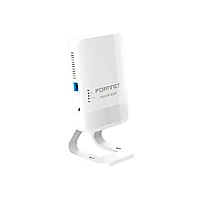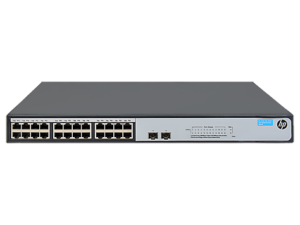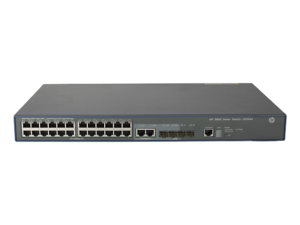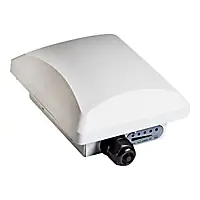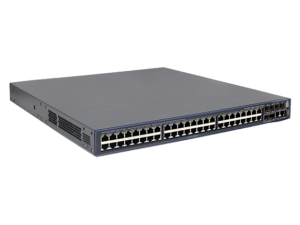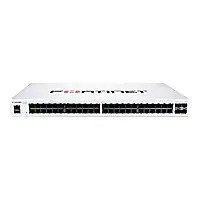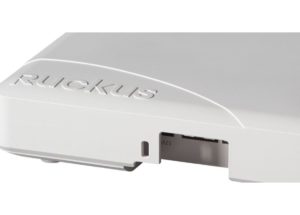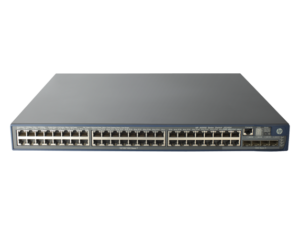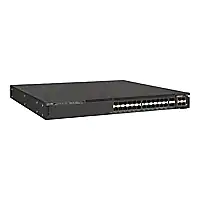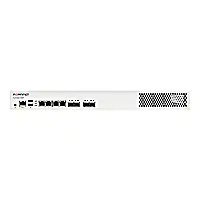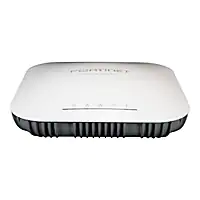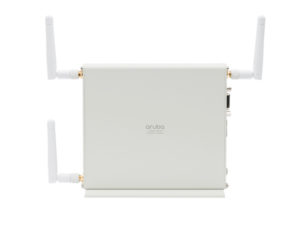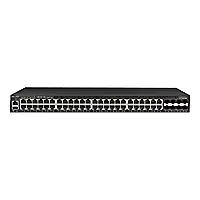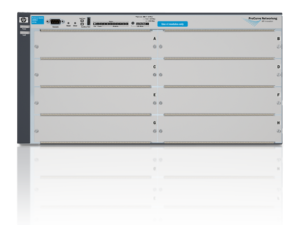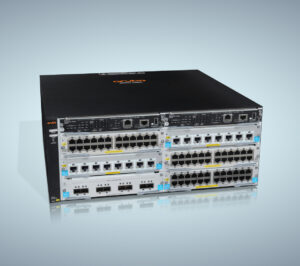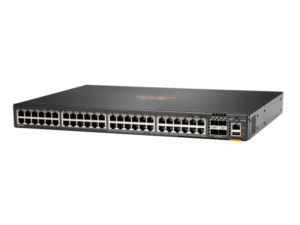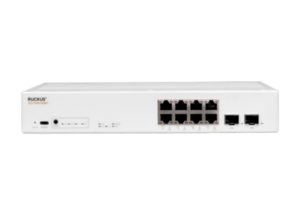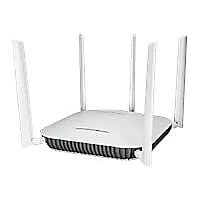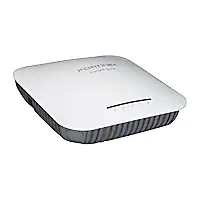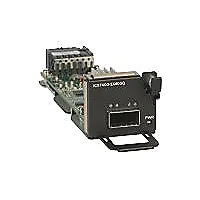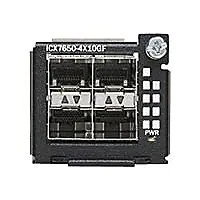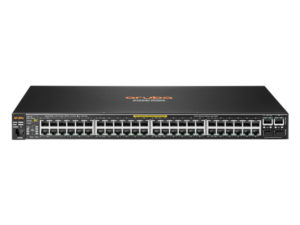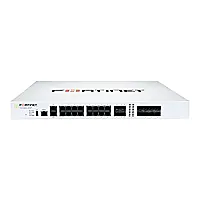Performance
â— Cisco Nexus 5548P and 5548UP: Layer 2 hardware forwarding at 960 Gbps or 714.24 mpps; Layer 3 performance of up to 160 Gbps or 240 mpps
â— Cisco Nexus 5596UP and 5596T: Layer 2 hardware forwarding at 1920 Gbps or 1428 mpps; Layer 3 performance of up to 160 Gbps or 240 mpps
â— MAC address table entries: 32,000
â— Low-latency cut-through design that provides predictable, consistent traffic latency regardless of packet size, traffic pattern, or enabled features on 10 Gigabit Ethernet interfaces
â— Line-rate traffic throughput on all ports
Interfaces
â— Cisco Nexus 5548P: 32 fixed 1 and 10 Gigabit Ethernet and FCoE ports; additional interfaces through one expansion module
â— Cisco Nexus 5548UP: 32 fixed ports configurable as 1 and 10 Gigabit Ethernet and FCoE or 8/4/2/1-Gbps native Fibre Channel; additional interfaces through one expansion module
â— Cisco Nexus 5596UP: 48 fixed ports configurable as 1 and 10 Gigabit Ethernet and FCoE or 8/4/2/1-Gbps native Fibre Channel; additional interfaces through up to three expansion modules
â— Cisco Nexus 5596T: 32 fixed ports of 1 and 10G BASE-T and 16 SFP+ fixed ports configurable as 1 and 10 Gigabit Etherent and FCoE or 8/4/2/1-Gbps native Fibre Channel; additional interfaces through up to three expansion modules
â— Expansion modules
â— 16-port 1 and 10 Gigabit Ethernet and FCoE module
â— 8-port 8/4/2/1-Gbps Fibre Channel plus 8-port 1 and 10 Gigabit Ethernet and FCoE module
â— Unified port module consisting of 16 ports configurable as 8/4/2/1-Gbps Fibre Channel or 1 and 10 Gigabit Ethernet and FCoE
â— 4-port QSFP expansion module
â— 12-port 10G BASE-T module (Cisco Nexus 5596T only)
â— Layer 3 module (Cisco Nexus 5596UP and 5596T only; one per system)
â— Layer 3 daughter card (Cisco Nexus 5548P and 5548UP only; one per system)
â— Extension through the Cisco Nexus 2000 Series
Layer 2 Features
â— Layer 2 switch ports and VLAN trunks
â— IEEE 802.1Q VLAN encapsulation
â— Support for up to 4096 VLANs
â— Rapid Per-VLAN Spanning Tree Plus (PVRST+) (IEEE 802.1w compatible)
â— Multiple Spanning Tree Protocol (MSTP) (IEEE 802.1s): 64 instances
â— Spanning Tree PortFast
â— Spanning Tree root guard
â— Spanning Tree Bridge Assurance
â— Cisco EtherChannel technology (up to 16 ports per EtherChannel)
â— Cisco vPC technology
â— Enhanced vPC enable vPC between Cisco Nexus 5000 and 2000 Series as well as between Cisco Nexus 3000 Series and end host
â— vPC configuration synchronization
â— Link Aggregation Control Protocol (LACP): IEEE 802.3ad
â— Advanced PortChannel hashing based on Layer 2, 3, and 4 information
â— Jumbo frames on all ports (up to 9216 bytes)
â— Pause frames (IEEE 802.3x)
â— Storm control (unicast, multicast, and broadcast)
â— Private VLANs
â— Private VLAN over trunks (isolated and promiscuous)
â— Private VLANs over vPC and EtherChannels
â— VLAN Remapping
â— Cisco FabricPath
â— EvPC and vPC+ with FabricPath
â— Cisco Adapter FEX
â— Cisco Data Center VM FEX
â— Support for up to 24 fabric extenders on each Cisco Nexus 5500 platform
Layer 3 Features
â— Layer 3 interfaces: Routed ports on Cisco Nexus 5500 platform interfaces, switch virtual interface (SVI), PortChannels, subinterfaces, and PortChannel subinterfaces for a total of 4096 entries
â— Support for up to 8000 prefixes and up to 16000 IPv4 and 8000 IPv6 host entries
â— Support for up to 8000 multicast routes
â— Support for up to 8000 IGMP groups
â— Support for 1000 VRF entries
â— Support for up to 4096 VLANs
â— 16-way equal-cost multipathing (ECMP)
â— 1664 ingress and 2048 egress access control list (ACL) entries
â— Routing protocols: Static, Routing Information Protocol Version2 (RIPv2), Enhanced Interior Gateway Routing Protocol (EIGRP), Open Shortest Path First Version 2 (OSPFv2), and Border Gateway Protocol (BGP)
â— IPv6 Routing Protocols: Static, Open Shortest Path First Version 3 (OPFv3), Border Gateway Protocol (BGPv6), Enhanced Interior Gateway Routing Protocol (EIGRPv6)
â— IPv6 VRF Lite
â— Hot-Standby Router Protocol (HSRP) and Virtual Router Redundancy Protocol (VRRP)
â— ACL: Routed ACL with Layer 3 and 4 options to match ingress and egress ACL
â— Multicast: Protocol Independent Multicast Version 2 (PIMv2) sparse mode, Source Specific Multicast (SSM), Multicast Source Discovery Protocol (MSDP), Internet Group Management Protocol Versions 2, and 3 (IGMP v2, and v3), and Multicast VLAN Registration (MVR)
â— Virtual Route Forwarding (VRF): VRF-lite (IP VPN); VRF-aware unicast; and BGP-, OSPF-, RIP-, and VRF-aware multicast
â— Unicast Reverse Path Forwarding (uRFP) with ACL; strict and loose modes
â— Jumbo frame support (up to 9216 bytes)
â— Support for up to 16 fabric extender on each Nexus 5500 with L3 modules
â— RFC 896
Quality of Service (QoS)
â— Layer 2 IEEE 802.1p (CoS)
â— 8 hardware queues per port
â— Per-port QoS configuration
â— CoS trust
â— Port-based CoS assignment
â— Modular QoS CLI (MQC) compliance – IPv4 and IPv6
â— ACL-based QoS classification (Layers 2, 3, and 4)
â— MQC CoS marking
â— Per-port virtual output queuing
â— CoS-based egress queuing
â— Egress strict-priority queuing
â— Egress port-based scheduling: Weighted Round-Robin (WRR)
â— Control Plan Policing (CoPP) – IPv4 and IPv6
Security
â— Ingress ACLs (standard and extended) on Ethernet and virtual Ethernet ports
â— Standard and extended Layer 2 ACLs: MAC addresses, protocol type, etc.
â— Standard and extended Layer 3 to 4 ACLs: IPv4 and IPv6, Internet Control Message Protocol (ICMP and ICMPv6), TCP, User Datagram Protocol (UDP), etc.
â— VLAN-based ACLs (VACLs)
â— Port-based ACLs (PACLs)
â— Named ACLs
â— Optimized ACL distribution
â— ACLs on virtual terminals (VTYs)
â— ACL logging on management interface
â— Dynamic Host Configuration Protocol (DHCP) snooping with Option 82
â— Dynamic Address Resolution Protocol (ARP) Inspection
â— IP source guard
â— DHCP relay
â— Cisco CTS (Authentication and Policy download from ACS)
â— Ethernet Port Security
â— IPv6 RACL
â— IPv6 PACL
â— IPv6 VACL
High-Availability Features
â— In-Service Software Upgrade (ISSU) for Layer 2
â— Hot-swappable field-replaceable power supplies, fan modules, and expansion modules
â— 1:1 power redundancy
â— N:1 fan module redundancy
Management
â— Switch management using 10/100/1000-Mbps management or console ports
â— CLI-based console to provide detailed out-of-band management
â— In-band switch management
â— Locator and beacon LEDs on Cisco Nexus 2000 Series
â— Port-based locator and beacon LEDs
â— Configuration synchronization
â— Module preprovisioning
â— Configuration rollback
â— Secure Shell Version 2 (SSHv2)
â— Telnet
â— AAA
â— AAA with RBAC
â— RADIUS
â— TACACS+
â— Syslog (8 servers)
â— Embedded packet analyzer
â— SNMPv1, v2, and v3 (IPv4 & IPv6)
â— Enhanced SNMP MIB support
â— XML (NETCONF) support
â— Remote monitoring (RMON)
â— Advanced Encryption Standard (AES) for management traffic
â— Unified username and passwords across CLI and SNMP
â— Microsoft Challenge Handshake Authentication Protocol (MS-CHAP)
â— Digital certificates for management between switch and RADIUS server
â— Cisco Discovery Protocol Versions 1 and 2
â— RBAC
â— Switched Port Analyzer (SPAN) on physical, PortChannel, VLAN, and Fibre Channel interfaces
â— Encapsulated Remote SPAN (ERSPAN)
â— Ingress and egress packet counters per interface
â— Network Time Protocol (NTP)
â— Cisco GOLD
â— Comprehensive bootup diagnostic tests
â— Call Home
â— Smart Call Home
â— Cisco Fabric Manager
â— Cisco DCNM
â— CiscoWorks LAN Management Solution (LMS)
Data Center Bridging
â— CEE- and IEEE-compliant PFC (per-priority Pause frame support)
â— PFC link distance support: 3000m
â— CEE-compliant DCBX Protocol
â— CEE- and IEEE-compliant Enhanced Transmission Selection
SNMP MIBs
Generic MIBs
â— SNMPv2-SMI
â— CISCO-SMI
â— SNMPv2-TM
â— SNMPv2-TC
â— IANA-ADDRESS-FAMILY-NUMBERS-MIB
â— IANAifType-MIB
â— IANAiprouteprotocol-MIB
â— HCNUM-TC
â— CISCO-TC
â— SNMPv2-MIB
â— SNMP-COMMUNITY-MIB
â— SNMP-FRAMEWORK-MIB
â— SNMP-NOTIFICATION-MIB
â— SNMP-TARGET-MIB
â— SNMP-USER-BASED-SM-MIB
â— SNMP-VIEW-BASED-ACM-MIB
â— CISCO-SNMP-VACM-EXT-MIB
Layer 3 MIBs
â— UDP-MIB
â— TCP-MIB
â— OSPF-MIB
â— BGP4-MIB
â— CISCO-HSRP-MIB
Fibre Channel MIBs
â— CISCO-ST-TC
â— CISCO-FC-FE-MIB
â— CISCO-FCSP-MIB
â— CISCO-PORT-TRACK-MIB
â— CISCO-PSM-MIB
â— CISCO-FC-SPAN-MIB
â— CISCO-PORT-CHANNEL-MIB
â— CISCO-RSCN-MIB
â— CISCO-NS-MIB
â— CISCO-FCS-MIB
â— CISCO-DM-MIB
â— FIBRE-CHANNEL-FE-MIB
â— CISCO-FC-ROUTE-MIB
â— CISCO-FSPF-MIB
â— CISCO-ZS-MIB
â— CISCO-ZS-EXT-MIB
â— CISCO-VSAN-MIB
â— CISCO-CFS-MIB
â— CISCO-FCPING-MIB
â— CISCO-FCTRACEROUTE-MIB
â— CISCO-FDMI-MIB
â— CISCO-FC-DEVICE-ALIAS-MIB
â— CISCO-WWNMGR-MIB
â— FCMGMT-MIB
â— CISCO-VEDM-MIB
â— CISCO-FCOE-MIB
Ethernet MIBs
â— CISCO-VLAN-MEMBERSHIP-MIB
â— CISCO-Virtual-Interface-MIB
Configuration MIBs
â— ENTITY-MIB
â— IF-MIB
â— CISCO-ENTITY-EXT-MIB
â— CISCO-ENTITY-FRU-CONTROL-MIB
â— CISCO-ENTITY-SENSOR-MIB
â— CISCO-FLASH-MIB
â— CISCO-SYSTEM-MIB
â— CISCO-SYSTEM-EXT-MIB
â— CISCO-IP-IF-MIB
â— CISCO-IF-EXTENSION-MIB
â— CISCO-SERVER-INTERFACE-MIB
â— CISCO-NTP-MIB
â— CISCO-IMAGE-MIB
â— CISCO-IMAGE-CHECK-MIB
â— CISCO-IMAGE-UPGRADE-MIB
â— CISCO-CONFIG-COPY-MIB
â— CISCO-ENTITY-VENDORTYPE-OID-MIB
â— CISCO-BRIDGE-MIB
Monitoring MIBs
â— DIFFSERV-DSCP-TC
â— NOTIFICATION-LOG-MIB
â— DIFFSERV-MIB
â— CISCO-CALLHOME-MIB
â— CISCO-SYSLOG-EXT-MIB
â— CISCO-PROCESS-MIB
â— RMON-MIB
â— CISCO-RMON-CONFIG-MIB
â— CISCO-HC-ALARM-MIB
Security MIBs
â— CISCO-AAA-SERVER-MIB
â— CISCO-AAA-SERVER-EXT-MIB
â— CISCO-COMMON-ROLES-MIB
â— CISCO-COMMON-MGMT-MIB
â— CISCO-RADIUS-MIB
â— CISCO-SECURE-SHELL-MIB
â— TCP/IP MIBs
â— INET-ADDRESS-MIB
â— TCP-MIB
â— CISCO-TCP-MIB
â— UDP-MIB
â— IP-MIB
â— CISCO-IP-PROTOCOL-FILTER-MIB
â— CISCO-DNS-CLIENT-MIB
â— CISCO-PORTSECURITY- MIB
Miscellaneous MIBs
â— START-MIB
â— CISCO-LICENSE-MGR-MIB
â— CISCO-FEATURE-CONTROL-MIB
â— CISCO-CDP-MIB
â— CISCO-RF-MIB
â— CISCO-ETHERNET-FABRIC-EXTENDER-MIB
â— CISCO-BRIDGE-MIB
Typical operating power/heat dissipation
660W
Maximum power/heat dissipation(Layer 2)
882W (without Layer 3 expansion module)
Maximum power (Layer 3)
972W (with Layer 3 expansion module)
Input voltage
100 to 240 VAC
Frequency
50 to 60 Hz
Efficiency
95 to 98% (50 to 100% load)
RoHS compliance
Yes

